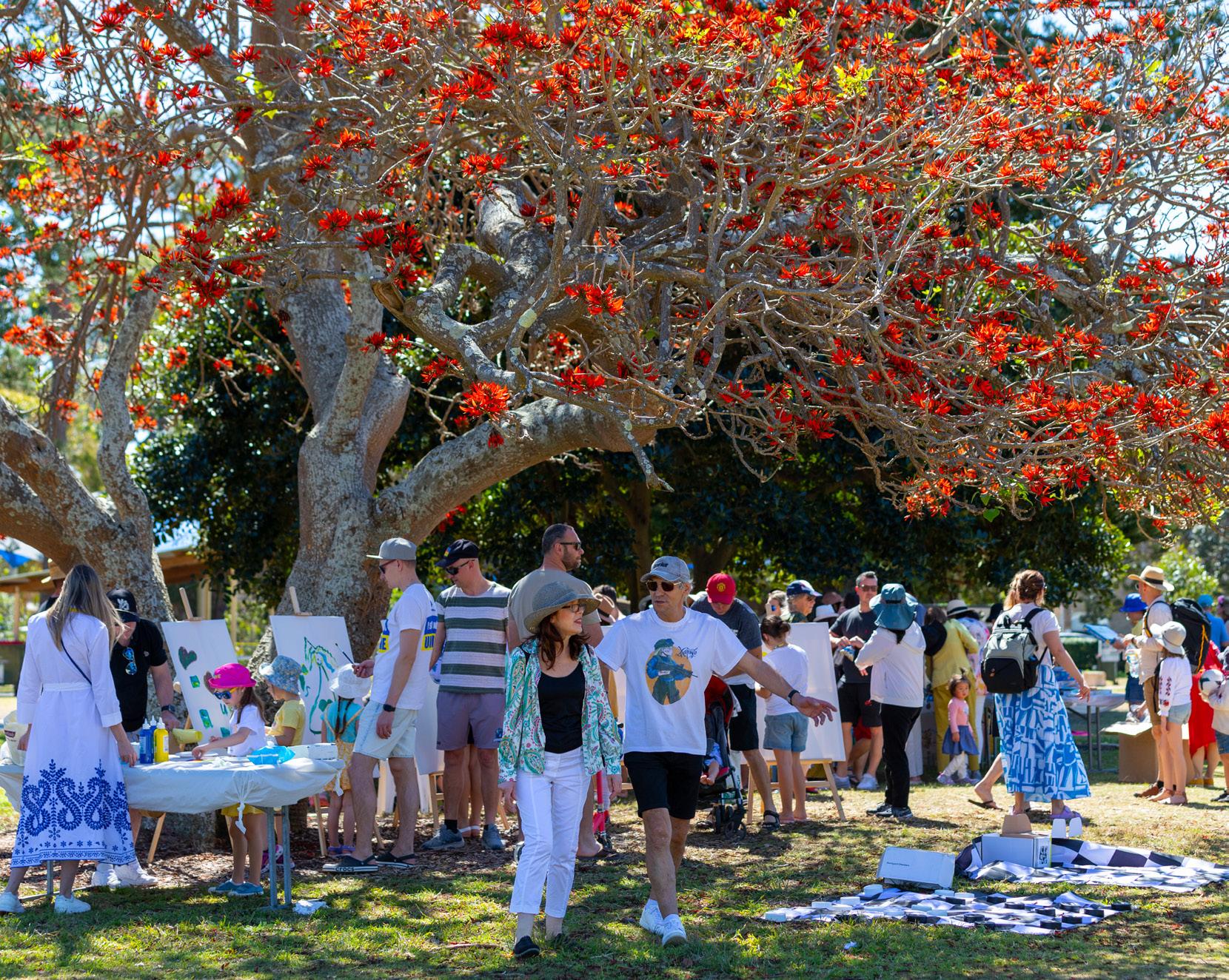
Acknowledgment of Country
Bayside Council acknowledges the Bidjigal Clan, the traditional owners of the land on which we meet and work and acknowledges the Gadigal people of the Eora Nation. Bayside Council pays respects to Elders past and present.




Bayside Council acknowledges the Bidjigal Clan, the traditional owners of the land on which we meet and work and acknowledges the Gadigal people of the Eora Nation. Bayside Council pays respects to Elders past and present.


The services we provide and the decisions we make affect the lives of people in our communities everyday. By showcasing Bayside and celebrating the accomplishments of its residents, we aim to foster a sense of pride and confidence within the community.
Bayside covers a large area with a significant variety of residents with different preferences, interests, backgrounds, requirements, and expectations. Bayside Council seeks to find a way to discover the varied needs of our community and the way we will do this is outlined in this strategy.
The community influences everything we do at Bayside, which is why our Communication & Engagement Strategy is an essential part of our work and activities.
We’re committed to ensuring the voices of our residents are heard and that our residents are kept informed on the work, opportunities, and projects of Council.
Communication keeps our community and key stakeholders up to date and informed. It raises awareness of all aspects of Council business including services, events, projects, plans and decisions.
Effective communication provides a strong foundation for Bayside to deliver:
Increased community support and involvement
Stronger relationships with stakeholders
A positive reputation for Bayside
Enhanced customer experience
Recognition as a trusted source of information
An attractive area for prospective businesses and residents
More effective involvement and engagement in decision making from the community

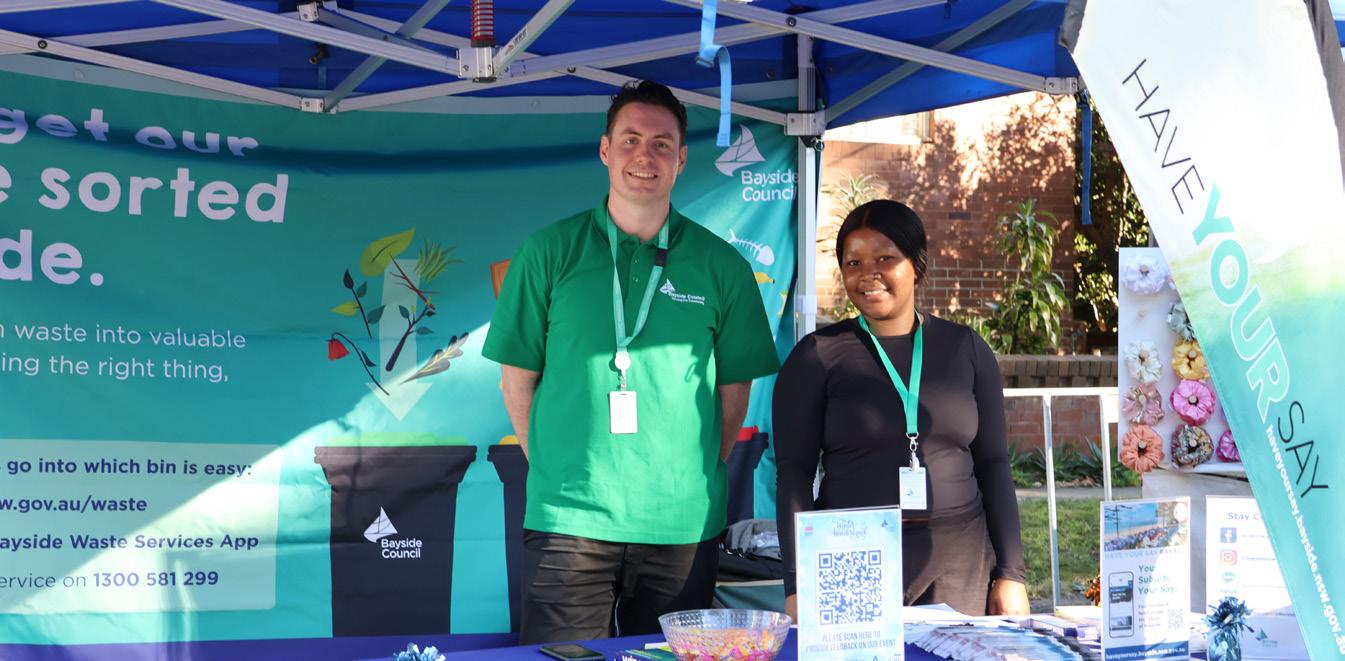
The goal of community engagement is to ensure that the voices of community members and impacted stakeholders are heard and valued in outcomes that impact their lives.
Community engagement refers to the efforts made to involve members of a community in decision-making processes and/or development of initiatives, or activities that affect them. Also known as ‘public participation’, community input is key to shaping and creating a Bayside where people want to live, work and play. Best practice engagement always requires good communication.
By engaging, Council strives to align its solutions, services, and initiatives with the needs and values of the Bayside community, foster positive relationships, and build trust.
As we navigate the rapidly evolving digital world, we look to incorporate new technologies and platforms to help spread information while also maintaining our tried and trusted communication methods.
This Communications & Engagement Strategy showcases how Council’s varied methods of communication and engagement link together to achieve clearly identified overarching objectives. The Strategy outlines how we will communicate and engage with the community, what we will communicate or open engagement for, what our communications and engagement priorities are and how residents can connect with Council in this space.
Bayside Council is dedicated to safeguarding the privacy of personal information collected from our community.
In carrying out our services and functions, we collect personal information in various ways. We carefully assess the appropriate level of information to be collected on a case-by-case basis, aiming to minimise the amount of personal information gathered and managed. This information is used for the purpose for which it was collected and may also be utilised for other Council functions as necessary and as authorised by law.
Our Communications and Engagement Strategy guides all plans, strategies and work outlined in the Integrated Planning & Reporting (IP&R) Framework.
This Strategy guides the development of the communities for the future as outlined in our Community Strategic Plan.
It also provides the map for the community’s say in the development of all our plans, strategies and projects.
The links to our overarching strategies allows Bayside to implement well considered, focused and intentional communications and engagement activities to best reflect and collect the needs and wants of our Bayside community.
IP&R is a framework developed by the NSW State Government to guide Councils in the planning, reporting and delivery of its community’s priorities.
IP&R enables Council to allocate resources to projects and activities based on the needs and direction provided by our community, and to ensure these align with the community’s values and vision for Bayside. It is where we Identify, Plan, Fund & Report on services and outcomes for our community.
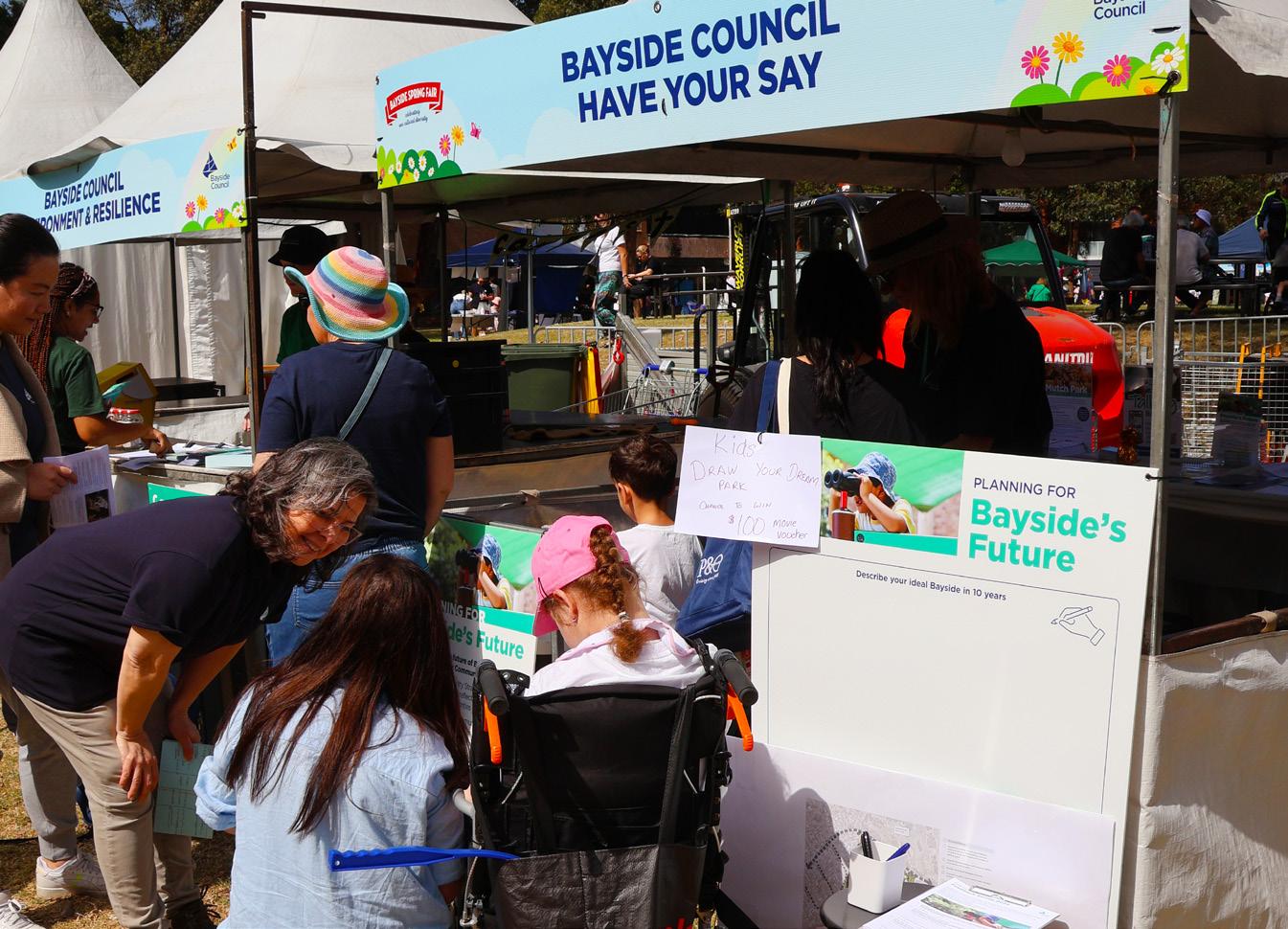
Council also has an important role to play in advocating for, and partnering with, other agencies to achieve local outcomes.
Communications and engagement is at the heart of local government. It enables communities to be active participants in shaping their future. Councils have a vital role to play in opening opportunities for community members to be involved in the strategic planning process. This strategy supports the development of all plans, policies, programs, and key activities, demonstrates a commitment to genuine and inclusive engagement and is based on social justice principles.
The key elements of the IP&R framework are a suite of documents including the Communications & Engagement Strategy (4 years); Community Strategic Plan (10 years +); Delivery Program (4 years); Supporting Strategies & Plans (5 years +); Resourcing Strategies (10 Years +) and the annual Operational Plans and Budgets.
This strategy supports the development of all plans, policies, programs and key activities, demonstrates a commitment to genuine and inclusive engagement and is based on social justice principles being:
Equity – fairness in decision making, prioritising and allocation of resources particularly for those in need.
Access – fair access to services, resources, and opportunities to improve quality of life.
Participation – the maximum opportunity to genuinely participate in decision making.
Rights – equal rights established and promoted for people from diverse linguistic, cultural and religious backgrounds to participate in community life.

At Bayside Council, our approach to community engagement is informed by the International Association for Public Participation (IAP2) Spectrum, which consists of five levels: Inform, Consult, Involve, Collaborate, and Empower.
This framework helps us identify the appropriate level of engagement based on project goals, timelines, resources, and expected impact.
To ensure our engagement is meaningful and proportionate, we assess each situation using the IAP2 framework. We leverage tools like the impact assessment matrix and community engagement matrix to guide our decisions and customise our engagement strategies (refer to pages 17 and 18).
For every community engagement project, we tailor a Community Engagement plan that outlines its position on the IAP2 Spectrum, clarifies the roles of both the Council and the community, as well as how feedback will be utilised.
Council must comply with several different pieces of legislation which set out when and how we should consult with our community.
Legislation relevant to this Strategy includes:
Environmental Planning and Assessment Act 1979
Government Information (Public Access) Act 2009
Privacy and Personal Information Protection Act 1998
Local Government Act 1993 Section 402
All councils in NSW follow the Integrated Planning and Reporting (IP&R) framework, which guides our planning and reporting activities. While there are instances where engagement is not required, such as operational matters, legal obligations, or when prior consultation has already occurred.
Council remains committed to informing the community wherever possible. We assess the need for community involvement based on the potential impact and interest levels, in line with the IAP2 framework. This ensures that our engagement efforts are meaningful and proportional.
Bayside Council’s is guided by the following principles for communications and community engagement:
We believe our community has a right to be involved in decision making that affects them. We are genuine, responsive, and transparent when seeking feedback from our community and considering that input when decisions are made. The right to be involved is at the very core of our democratic processes in local government. Our communications will promote opportunities for participation and involvement.
We respect people’s time and will provide appropriate timeframes for participation to be meaningful. We plan for, and incorporate, communication and engagement timelines into our project schedules and plans to ensure the voices of our community are heard and that they are kept informed on the work, opportunities, and projects of Council.
We are inclusive and accessible to all stakeholder groups, incorporating all ages, abilities, genders, and cultural backgrounds. We provide a range of engagement activities and communication methods to enable the broadest possible range of stakeholders to have the opportunity to participate.
We will engage with clarity around what the project/initiative/decision is and where the community can influence. We will provide all relevant information relating to the matter being considered to ensure the community can participate in a meaningful way. We will report back on how the community input shaped the outcome or decision.
We will use a range of engagement and communication methods that suit the purpose of the project to reach the relevant stakeholders and audience. The level of influence the community will have will be clearly articulated and appropriate for the nature, complexity, and level of impact of the decision being made. Information will be in plain language, easily accessible and easy to understand with a clear purpose for all information.
To effectively communicate to and engage with the community, we must have a clear understanding of the people in it. Council’s communication and engagement activities should consider and incorporate the needs of the diverse Bayside community.
The Bayside community consists of a diverse array of residents representing various ages, languages, cultures, and backgrounds. Bayside is a fast-growing LGA with over 182,987 residents across 29 suburbs with over 51% of residents speaking a language other than English at home.
Bayside recognises the traditional owners of our land and work to address the legacy of our past. The area has a rich First Nations history, which we acknowledge in our communications and engagement activity.
Bayside Profile
Stakeholders are individuals or groups who have a vested interest in the Council’s decisionmaking process. A vital component of effective community engagement is identifying and understanding these key stakeholders, particularly those who are directly impacted by or have a strong interest in Council decisions.
Our primary goal is to engage all members of the community, ensuring that we capture a wide and diverse range of perspectives. Strong relationships with our stakeholders –including service providers and agencies that work with harder-to-reach groups such as youth, First Nations peoples, individuals with disabilities, and residents from non-English speaking backgrounds – are fundamental to enhancing the Council’s connection with these communities.
Bayside Council has established dedicated community advisory committees and working groups that are essential in driving our strategies, including those outlined in the Reconciliation Action Plan and the Disability Inclusion Action Plan. These groups, which consist various internal and external stakeholders, such as staff, Councillors, and community members, meet regularly to address key issues, ensuring that our engagement efforts are both informed and inclusive.
Our committees and groups include:
Executive Committee
Bayside Floodplain Risk Management Committee
Bayside Local Planning Panel
Bayside Traffic Committee
Botany Historical Trust
City Planning and Environment Committee
City Services Committee
City Works and Assets Committee
Corporate Performance Committee
Disability Inclusion Action Plan Working Group
Lydham Hall Advisory Committee
Reconciliation Action Plan Working Group
Seniors Network Group
Sport and Recreation Committee
Staff Consultative Committee
Youth Advisory Committee
The list of external stakeholders is long and varied. Stakeholder groups who may be identified in a community engagement process include:
Aboriginal and Torres Strait Islander community
Active industry groups or associations
Businesses operating in Bayside
CALD community
Chambers of commerce
Childcare services and centres
Children and families
Community, sporting, cultural and environmental groups
Disability and wellbeing support services
Emergency services
Future residents
Health and support services
Investors (existing/new/potential)
LGBTQI+ community
Local Members of Parliament
Neighbouring/other local councils
Not-for-profits and non-government organisations
People who live, work, or visit Bayside
Refugee community
Retirees/mature aged people
Schools, colleges, and universities
State and federal government agencies/services
Students
Those living in assisted care
Transport authorities
Voluntary groups
Vulnerable people
Young people
While most community engagement is conducted in-house by Council staff, Bayside Council occasionally engages external consultants to manage specific projects. This is particularly important for sensitive or potentially contentious issues, where it is crucial for Council to maintain impartiality.
The overarching objective of this Strategy is to provide timely, clear, and informative communications and meaningful opportunities for engagement on relevant Council projects. We will ensure that the community feels informed, valued, reflected, and respected. Our aim is for everyone to feel supported, proud, and to have easy access to information.
Communications material will relay Council messages in an effective, consistent, and proactive manner to ensure residents are well-informed.
Bayside’s communications and engagement activities will:
Generate engagement on digital media to reach a larger portion of our target audience through engaging content. 1 2 3 4 5 6
Develop proactive, relevant and consistent communication with residents across a range of communication channels and platforms.
Clearly and effectively communicate what Council delivers to the community through engaging and transparent messaging.
Help the community feel valued and supported through easy access to education, information, and support.
Allow the community to have meaningful and genuine contributions that shape decisions and project outcomes.
Engage and collaborate with our diverse and creative community, understanding and including the variety of views, experiences, and expertise of our community.
1. Develop proactive, relevant and consistent communication with residents across a range of communication channels and platforms
Ensure information on decisions, projects, events and issues is communicated through a mixture of online and traditional tools.
Communicate information across a range of channels in a timely manner.
Ensure a range of information is communicated to meet the needs of the varied audience within the community.
Build a clear expectation of how the audience can find information.
Establish an internal process for submitting information to the Communications team for dissemination through various channels.
2. Clearly and effectively communicate what Council delivers to the community through engaging and transparent messaging
Appropriately disseminate information to deliver key, digestible messages.
Make residents aware of impacts or opportunities.
Give residents a reason to engage with our content.
Enhance Council’s identity through consistent messaging and visual presence.
Review and enforce the principles of the Style Guide and use of key messages in all communication.
Implement plain language communication across the organisation.
Ensure risk/crisis communication plans are in place to respond appropriately to a range of scenarios.
3. Help the community feel valued and supported through easy access to education, information, and support
Communicate opportunities for residents regularly and clearly.
Share educational resources regularly to ensure residents are aware regardless of the timeliness of the initiatives or information.
Give a clear way for residents to find out more or contact Council with questions about Council initiatives.
4. Allow the community to have meaningful and genuine contributions that shape decisions and project outcomes
5. Engage and collaborate with our diverse and creative community, understanding and including the variety of views, experiences, and expertise of our community
6. Generate engagement on digital media to reach a larger portion of our target audience through engaging content
Provide opportunities for engagement using the engagement framework.
Support contributions through a variety of mediums to support the needs of residents.
Report community feedback to Council and use insight to shape project outcomes.
Showcase the creative, diverse, and cultural initiatives that Bayside implements.
Celebrate the diversity of Bayside through Council’s content.
Present a range of views, experiences, and expertise through our content.
Use best practices to generate content that is tailored and appropriate for the current communications climate.
Utilise new trends and opportunities to create different content that engages the community.
Generate content that is shareable and engaging to allow residents to spread the work of Council organically.
Create a forward plan of our content based on known interests of people at particular times of year and upcoming engagement opportunities.
Represent wherever possible our community through real, local, and inclusive images and content.
Bayside Council employs the Impact Assessment Tool. To clearly define the purpose, objectives, and scope of a community engagement program. This tool evaluates the appropriate levels of engagement at various stages of a project by assessing both community interest and the potential impact.
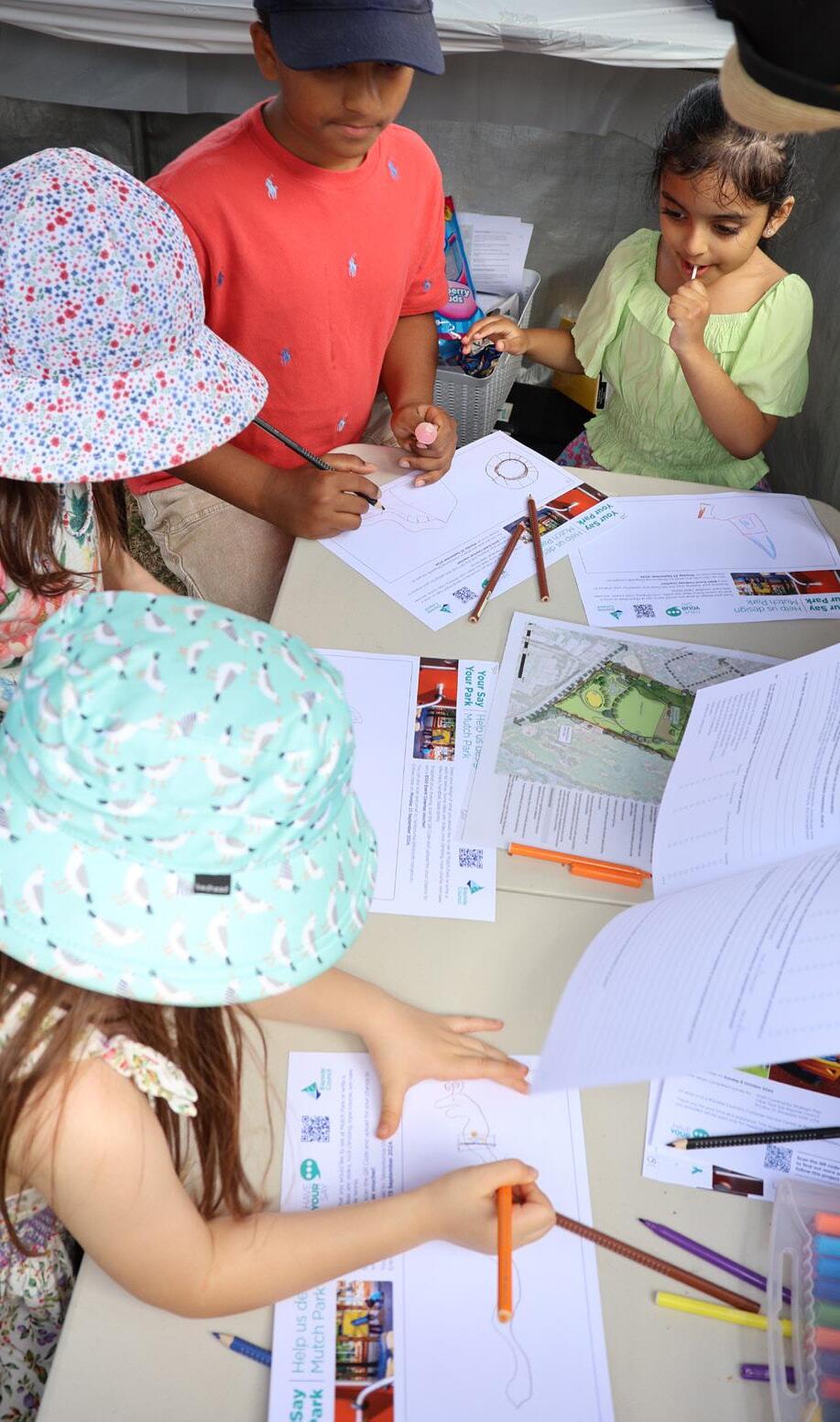
Statutory engagement is legally required under NSW planning regulations and must comply with specific legislative frameworks such as the Environmental Planning and Assessment Act 1979 (EP&A Act).
This includes:
Minimum Timeframes: Statutory legislation sets minimum periods for public notification and consultation on planning matters.
Timeframes for Notification: The minimum number of days required for public consultation depending on the type of application or planning process.
Methods of Notification: Such as written notice, advertisements, and online notifications.
Councils Community Participation Plan (appendix to this strategy) outline details for most of our nonstatutory engagements.
Non-statutory engagement refers to any consultation or engagement activities that go beyond or have no minimum legal requirements.
Non-statutory engagement is particularly important for projects that might not legally require consultation but can still benefit from community input, such as smaller local projects or policy development. Council often use non-statutory engagement to gather broader community feedback and foster a more inclusive process.
For all non-statutory engagements, Council determines the necessity of involving the community by considering two key factors:
Level of Community Impact
What’s the impact – consider political, financial, environment, community wellbeing.
Level of Community Interest
Consider what we know is important to our community – e.g. current community satisfaction survey results and previous feedback.
Based on the desired or required levels of impact and interest, the Council tailors each project to utilise the most effective engagement methods. This ensures that the chosen approach aligns with the project’s goals and fosters meaningful and appropriate community participation.
Goal
Council Role
Community Role
Methods and Channels
To provide the public with balanced and objective information to assist them in understanding the problem, alternatives, opportunities and/or solutions.
We keep the community informed by providing timely, accurate information on decisions, projects, and services that impact them.
To obtain public feedback on analysis, alternative and/or decisions
Council will actively listen to and acknowledge your concerns, ensuring they play a key role in shaping the decision-making process.
Listen Contribute
Website, social media, and newsletters.
Advertisements, public notices, signs, letters, flyers.
Customer Service Centre and Libraries.
Have Your Say (HYS) Site, Surveys, Quick Poll, Interviews, Town Hall.
HYS pop up’s and activations.

To work directly with the public throughout the process to ensure that public concerns and aspirations are consistently understood and considered.
Council will share information, ideas, and concerns with you, with emphasis on mutual exchange and consideration of community input and the integration of community input into decisionmaking.
To partner with the public in each aspect of the decision including the development of alternatives and the identification of the preferred solution
Council will seek advice and recommendations from stakeholders and incorporate and integrate them into the decisionmaking process wherever possible.
To place final decision making in the hands of the public.
Council will implement or support the decisions made by the community.
Participate Partner Partner/Lead
Workshops
Focus Groups
Advisory Committees
Reference Groups
Working Groups
Steering Committees
Reference Groups
Working Groups
Codesign Panel
Elections
Referendums
Representative Telephone Survey

Our Engagement Model is based on four key steps: Plan, Do, Consider and Review. Each step is carefully designed to make our community engagement efforts timely, efficient, and effective.
Through this model, Bayside Council is committed to creating a transparent, responsive, and inclusive environment where community input directly influences our projects and services.
Early planning is key for effective engagement. We need to allocate enough budget and resources for the process. Set our purpose, objectives, and scope; assess community impact and interest; determine engagement levels; review past engagements; and consider future needs and connections to other Council projects.
In this phase, we will establish the following in an Engagement Plan:
The purpose, objectives, and scope of the community engagement,
The proposed IAP2 levels of engagement at different project stages, based on the community interest and impact assessment.
What aspects the community can influence or provide feedback on and the benefits of incorporating community input into the project.
How feedback will be utilised to shape the outcomes.
The types of engagement activities to be implemented including the specific community groups, timing and locations of events.
Background research, prior data analyses, recent studies from relevant engagement programs, and other supporting materials.
Roles and responsibilities, including decision-makers and approval processes.
Whether the projected costs of engagement offer good value for ratepayers, considering the scope and scale of the decision.
Identify opportunities to combine projects targeting the same stakeholder groups.
The next step is to conduct genuine and respectful engagement that fosters trust in Council’s processes.
During this phase, we will ensure that:
The purpose and level of influence of the engagement are clearly communicated.
Activities are inclusive and accessible.
We listen and respect the diverse perspectives and experiences within our community.
The community feels heard and understood.
Engagement plans are monitored and adjusted, as necessary.
At this stage, we will either consider the feedback and or prepare a report for Council outlining the outcomes of the community engagement to guide decision-making or the drafting of documents. We may also offer an opportunity for additional feedback.
We will:
Review and consider all feedback received.
Adopt a holistic approach that considers qualitative insights, not just quantitative data, including feedback from interviews, focus groups, and open-ended surveys.
Utilise the findings to influence decisions or advocate for the community when we do not have decision-making authority.
Communicate the findings and decisions in a timely and accessible manner.
Plan how to ‘close the loop’ by reporting back at the start of the engagement process.
In this stage, Council will review the engagement process and reflect on what was learned during the implementation of the Engagement Plan. We will assess what worked well, identify areas for improvement, and document our insights.
Community feedback – both positive and negative – on Council’s engagement activities is always welcome. This feedback can be provided directly to the team managing the engagement process or through Council’s Community Engagement Team.
This evaluation provides an opportunity for Council to deepen its understanding of the community and enhance skills and knowledge for future engagement efforts.
We will:
Welcome and actively listen to community feedback at any time.
Plan our evaluation process at the outset of the engagement.
Document and share the lessons learned for future reference.

We value the feedback of everyone we engage with, and it is important to us that this input is genuinely considered when decisions are made. After community feedback has been reviewed, Council staff recommend the next steps or outcomes.
When drafting a community engagement report, it is crucial to include several important elements.
Begin with an introduction, followed by a clear timeline outlining the project’s progression. Include an engagement brief detailing the context and purpose, alongside specific engagement goals.
Outline the IPA2 level of engagement and the methods employed. Present the engagement and communication materials used and provide a snapshot of results on a dedicated page.
Dive into the detailed methodology, Review and consider all feedback received then present the findings and challenges faced, especially those that may impact broader Bayside goals.
Finally, highlight key insights and emerging themes that surfaced throughout the engagement process. Supported by quantitative and qualitative analyses, response rates, and considerations regarding the representativeness of the sample.
After the completion of every project, the engagement team will submit a report to the project team.
To close the loop and ensure transparency, we will:
Update the Have Your Say project page with a summary of the feedback received, the outcomes, and the next steps.
Email participants who provided feedback with the results of the consultation and a link to the project page for further details.
Follow up by email with those who provided feedback once the project reaches its next milestone or decision point.
There are several ways we evaluate our engagement:
Reach: How many individuals were informed? Did we successfully reach the most affected groups?
Participation: Levels of involvement in activities, depending on the project’s nature.
Method Suitability: Of engagement methods for different stakeholders.
Feedback: Community feedback, both verbal and written, regarding the engagement’s effectiveness.
Principles: Fulfillment of communication and engagement principles.
Inclusivity: Ensuring inclusive communication and community representation.
Strategy: The Communications and Engagement Strategy guided the engagement process.
Close the Loop: We have reported back the findings and decisions to community and advised the next steps.
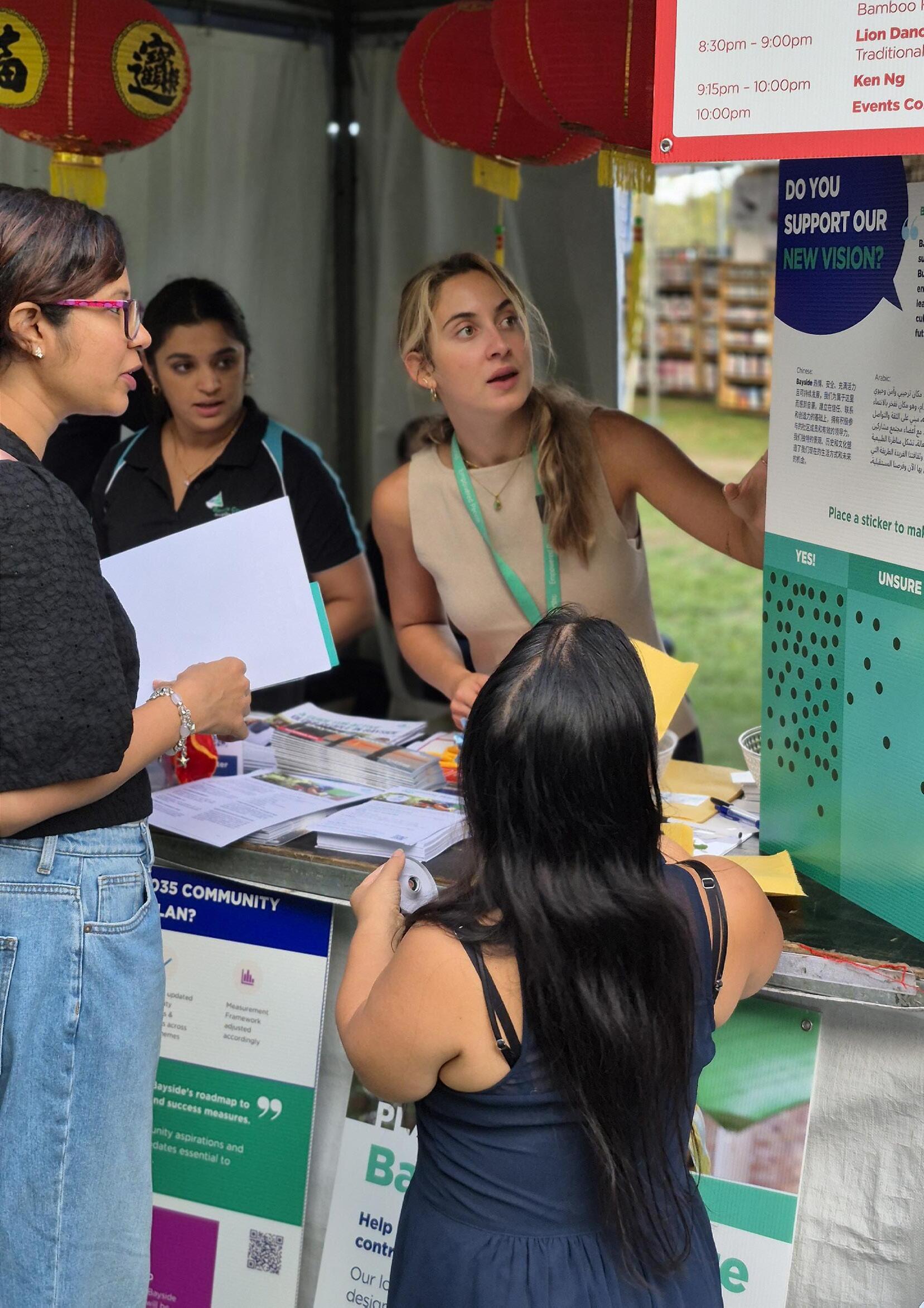
This includes non-legislated plans policies and strategies.
Policies
Strategies like Masterplans
Studies and informing strategies
Community Strategic Plan
Community Engagement Strategy (including Community Participation Plan)
Special Rate Variations
Local Strategic Planning Statement (LSPS)
Local Environmental Plan (LEP)
*Please refer to Section Two Community Participation Plan for all matters that fall under the EP&A Act.
Infrastructure Projects
Community facilities, buildings, parks and playgrounds.
Council construction
Renewal
Council service levels, change of use of a location, introduction of minor modification to a Council supplied community service.
Introduction of new program (for example, dog off-leash areas).
A change to a Council service such as waste collection frequency.
This includes road closures parking changes and creation or amendment of Resident Parking Schemes.
Inform
Consult
Involve
Collaborate
Involve/ Collaborate
Involve
Collaborate
Involve/ Collaborate
Inform/Consult
Inform/Involve
Inform
Consult
Consult
Inform/Consult
The following community engagement matrix table outlines how we engage with our community about key priorities, plans and strategies. Planning-related projects have specific exhibition timeframes which must be met.
Website, social media, and e-newsletters.
Advertisements, public notices, signs, letters, flyers.
Information at Customer Service Centre and Libraries.
Website, social media, and e-newsletters.
Advertisements, public notices, signs, letters, flyers.
Information at Customer Service Centre and Libraries.
Personalised Invitations to key stakeholders and groups.
Have Your Say (HYS) Project Page. Survey, Quick Poll, Interviews. Town Hall/Public Meetings.
HYS Pop Up’s and Activations.
Website, social media, and e-newsletters.
Advertisements, public notices, signs, letters, flyers.
Information at Customer Service Centre and Libraries.
Website, social media, and e-newsletters.
Advertisements, public notices, signs, letters, flyers.
Information at Customer Service Centre and Libraries.
Workshops. Focus Groups. Advisory Committees. Reference Groups. Working Groups.
HYS Pop Up’s and Activations. Panel / Town Hall / Public Meeting. Representative Telephone Survey. Webinars.
Have Your Say (HYS) Project Page. Survey, Quick Poll, Interviews, Webinars. Town Hall/Public Meetings.
HYS Pop Up’s and Activations.
Have Your Say (HYS) Project Page. Survey, Quick Poll, Interviews, Webinars. Town Hall/Public Meetings.
HYS Pop Up’s and Activations.
Website, social media, and e-newsletters.
Advertisements, public notices, signs, letters, flyers.
Information at Customer Service Centre and Libraries.
Have Your Say (HYS) Project Page. Survey, Quick Poll, Interviews, Webinars. Town Hall/Public Meetings.
HYS Pop Up’s and Activations.
Key points to note about public exhibitions include the following:
Section 2.21(2) of the EP&A Act details the types of proposals that must be considered in the CPP and Schedule 1 sets a minimum exhibition timeframe for most of these proposals. Council will always exhibit a proposal for this minimum timeframe and will consider an extended timeframe for exhibition based on the scale and nature of the proposal. The only requirements in this plan that are mandatory are those set out and these are the same as the mandatory minimum timeframes in Schedule 1 of the EP&A Act.
Officers of Council make recommendations to independent local and regional planning panels in relation to development applications and planning proposals, and to Council itself in relation to Planning Proposals. When making assessments about proposed developments some may also be determined under delegation by Council staff. Consideration is given as to whether the proposals are in accordance with strategic priorities outlined in state and local government policies and strategies, and whether impacts are acceptable and in the public interest in accordance with applicable policies and guidelines, including the EP&A Act. Consideration is also required to be given to public submissions in accordance with the EP&A Act.
A public authority is not required to make available for public inspection any part of an environmental impact statement whose publication would, in the opinion of the public authority, be contrary to the public interest because of its confidential nature or for any other reason.
There may be some occasions where a government priority or administrative requirement demands immediate action on proposals that prevent the implementation of our usual community participation process.
Timeframes are in calendar days and include weekends. If the exhibition period is due to close on a weekend or a public holiday, Council may extend the exhibition to finish on the first available workday.
The period between 20 December and 10 January (inclusive) is excluded from the calculation of a period of public exhibition. Council will not initiate an exhibition/ notification period during this time. This timeframe is consistent with clause 16, Schedule 1 of the EP&A Act.
Where an Act or Regulation mandates a longer minimum exhibition period than listed in this policy, then the Act or Regulation will take precedence.
Council will consider all submissions received within the exhibition period. Late submissions will only be considered in extenuating circumstances, and at the discretion of the Council officer assessing the proposal.
Applications for state significant development and state significant infrastructure are exhibited by the NSW Department of Planning, Industry and Environment.


The Community Participation Plan (CPP) determines how and when Council will engage with the community on planning matters.
Community participation creates a shared sense of purpose, direction and understanding of the need to manage growth and change while preserving local character. It provides access to community knowledge, ideas and expertise; and builds confidence in the planning system.
The CPP focuses on community participation in land use planning as required by the Environmental Planning and Assessment Act 1979. This CPP will provide the community with certainty over the level of engagement for certain types of development and planning matters. It will ensure transparency and accountability on planning and development decisions through an appropriate and consistent engagement method and timeframe.
Council plans for communities by undertaking strategic planning and considering social, environmental and economic issues in light of the special attributes of the area. Strategic planning sets the desired outcomes and provides direction on how to achieve them and provides a platform to enable development and help manage change.
Examples of this work include preparing new local environmental plans; planning proposals to amend local environmental plans; development control plans; contribution plans; policies; strategies and master plans.
Officers of Council make recommendations to independent local and regional planning panels in relation to certain development applications and to Council in relation to Planning Proposals. Most development applications are determined by Council officers under delegation.
Consideration is given as to whether the proposals are in accordance with strategic priorities outlined in state and local government policies and strategies, and whether impacts are acceptable and in the public interest. Consideration is also required to be given to public submissions.
Council’s CPP is a requirement of the EP&A Act (see division 2.6 and Schedule 1 of the EP&A Act) and applies to the exercise of planning functions by Council and its delegates. The Bayside CPP will be reviewed on a periodic basis. It does not apply to other New South Wales (NSW) planning authorities, such as other local councils. All other NSW planning authorities will prepare their own CPP.
Public exhibition is a formal stage of engagement where documents are available for the community to view and provide their feedback (called submissions), which is considered before a decision is made.
For planning matters, public exhibition usually includes:
Description of what is being proposed;
Notifying individual landowners/occupiers; and
Advertising/publishing the exhibition notice on council’s website, including the timeframe and how submissions can be made.
Section 2.21(2) of the EP&A Act details the types of proposals that must be considered in the CPP and Schedule 1 sets minimum exhibition timeframes for most of these proposals. Council will always exhibit a proposal for this minimum timeframe and will consider an extended timeframe for exhibition based on the scale and nature of the proposal.
The only requirements in this plan that are mandatory are those set out and these are the same as the mandatory minimum timeframes in Schedule 1 of the EP&A Act.
Key points to note about public exhibitions include the following:
A public authority is not required to make available for public inspection any part of an environmental impact statement whose publication would, in the opinion of the public authority, be contrary to the public interest because of its confidential nature or for any other reason;
Timeframes are in calendar days and include weekends. If the exhibition period is due to close on a weekend or a public holiday Council may extend the exhibition to finish on the first available workday; and
The period between 20 December and 10 January (inclusive) is excluded from the calculation of a period of public exhibition.

Draft Community Participation Plan (CPP) 28 days
Draft Local Strategic Planning Statements (LSPS) 28 days
Planning proposals for local environmental plans subject to a gateway determination 28 days or as specified by the gateway determination, or due to the minor nature of the proposal, no public exhibition is required
Draft Development Control Plans
Draft Contribution Plans
DEVELOPMENT ASSESSMENT MANDATORY EXHIBITION TIMEFRAMES
Applications for certain types of development consent (other than for complying development certificate, for designated development or for State significant development) 14 days
Application for development consent for designated development 28 days
Application for development consent for integrated development 30 days
Applications for certain types of modification of development consent that is required to be publicly exhibited by the regulations 14 days
Environmental Impact Statement obtained under Division 5.1 28 days
Council related development applications 28 days
Some proposals do not have minimum exhibition timeframes. As a matter of course, and in line with our community participation objectives, Council will typically exhibit documents related to the exercise of these functions and proposals for the timeframes described below.
Draft policies and guidelines
Application for modification of development consent that is not required to be publicly exhibited by the regulations
Plans for urban renewal areas
Re-exhibition of any amended application or matter referred to above
28 days based on the urgency, scale and nature of the proposal
Up to 14 days based on scale and nature of the proposal
Commonly six weeks
Discretionary based on the urgency, scale and nature of the proposal
Notes: There may be other proposals not subject to the mandatory exhibition timeframes for which Council will have the option to exhibit for at least 28 days and engage with the community in line with our community participation objectives.
Additionally, there may be some occasions where a government priority or administrative requirement demands immediate action on proposals that prevent the implementation of our usual community participation process.
Draft Community Participation Plan (CPP)
Draft Local Strategic Planning Statements (LSPS), Master Plan, Strategies
Planning proposals for local environmental plans subject to a gateway determination
Draft Development Control Plans
Draft Contribution Plans
Draft Planning Agreements
EXHIBITION REQUIREMENTS
Please refer to Schedule 1 of the EP&A Act.
Please refer to Schedule 1 of the EP&A Act.
Notification on Council’s website.
Council may also hold workshops and drop-in sessions during the exhibition period.
Please refer to Schedule 1 of the EP&A Act.
Notification on Council’s website.
Notification in writing to owners and occupants and adjoining property owners unless Council is of the opinion that the number of property owners makes it impractical to notify them.
Owners/occupiers of land as per figure 1 - notification of property.
Notification on Council’s website.
Notification in writing to owners and occupants and adjoining property owners unless Council is of the opinion that the number of property owners makes it impractical to notify them.
Owners/occupiers of land as per figure 1 - notification of property.
Please refer to Schedule 1 of the EP&A Act and Part 9 Division 3 of the EP&A Regulations at: legislation.nsw.gov.au/ view/whole/html/inforce/current
Notification on Council’s website.
Submissions about a plan or application on public exhibition may be made during the specified period. Submissions may be made either online or by writing to Council and must include a name, address and contact details.
Anyone can make a comment on any aspect of the proposal.
Submissions should include the reasons for support or opposition to the proposal.
After the public exhibition/notification period closes, Council officers will review and consider all submissions received within the exhibition period.
For development matters, Council officers complete an assessment of the application and include a summary of submissions in the development assessment report. For Strategic planning matters, Council officers review submissions for reporting to Council and a summary of engagement outcomes will be published on the website
This section details how and when council notifies the community about development applications received.
This section includes how development is categorised based on the extent of the likely impacts, identified owners who will be notified and provides a consistent, transparent approach for community participation in development assessment.
Development applications listed – please refer to attachment A to CPP.
Modification of development applications
Review of determination under section 8.2 of the EPA Act,
Unless otherwise exempted by the EPA Act, Council will notify:
Owners/occupiers of land as per figure 1 - notification of property owners and occupiers of neighbouring properties to a development site.
Owners and occupiers of any neighbouring land which, in the opinion of council, may be adversely affected by the development.
For notification relating to sites on the border of a local government area, council will notify the adjoining council and residents in the city of the development site, where, in the opinion of council, properties in that local government area may be affected by a development application.
In cases where the adjoining property is a strata titled development, all strata unit owners will be notified in addition to the Owners Corporation.

A notification letter to owners of neighbouring properties, as shown in Figure 1 containing:
Address of the development site;
Description of the proposal;
Details of the notification period;
How to view the application; and
Details on how to make a submission.
A sign may be installed at the site visible and legible from the public domain on or before the start of the notification period, weather permitting.
Applications for modifications to a development consent (Section 4.55 or 4.56 of the Environmental Planning and Assessment Act 1979) or a review of a determination will be notified in the same manner as the original development application.
However, if in the opinion of the council officer a modification application under Section 4.55 or 4.56 of the EPA Act will have no additional adverse impact on any adjoining or nearby properties, no notification will be required.
If in the opinion of the relevant Council officer, the amended plans to a development application under assessment will have no additional adverse impact on any adjoining or nearby properties, no notification will be required.
For all other amended plans to a development application under assessment, the development application must be renotified for a minimum seven days. The relevant Council officer may extend the time of notification if deemed appropriate.
Notes: The above demonstrates the minimum properties to be notified. Council will assess the size, nature and impact of the potential development and may extend the area at its discretion.
The table below provides a guide for the notification requirements for local development. The following abbreviations and their meanings are provided below.
C Construction
A/A Alterations and Additions
C/U Change of Use (including minor internal fit out)
All Any Type of Work/Proposal
Table 1: Notification and Advertising Requirements for Local Development
PROPOSED USE OR DEVELOPMENT EXTENT OF DEVELOPMENT LETTERS
Any change of operational hours adjacent to residential area or residential use
Demolition (no earthworks)
(excavation or filling)
to a heritage item or development within a heritage conservation area
Residential accommodation
Boarding houses and co-living development
Dwelling (includes attached dwelling, detached dwelling, dual occupancy, semi-detached dwelling, secondary dwelling including ancillary development eg swimming pools, decks etc)
Group homes (permanent or transitional), hostels
Retail premises
wharf, jetty, boat launching ramp, boat shed)
other
Notes: Council has the discretion to alter any of the above for an application where the nature of the development, its location or the history of the site warrants it. The extent of development identified as ‘Minor’ or ‘Major’ will be made at the discretion of Council.
A plan developed by councils for the purpose of obtaining financial contributions from new development towards the cost of new and upgraded public amenities and/or services required to accommodate new development.
A plan that provides detailed planning and design guidelines to support the planning controls in a LEP.
A gateway determination is issued following an assessment of the strategic merit of a proposal to amend or create an LEP. It allows for the proposal to proceed to public exhibition.
An environmental planning instrument developed by a local planning authority, generally a council. An LEP sets the planning framework for a Local Government Area.
Participating in community engagement activities has many benefits. Not only does community input help to shape the future of Bayside it provides people, and communities, with opportunities to come together.
We use a variety of channels to promote ways to get involved.
Sign up to our regular eNewsletter to keep up to date on activities and projects.
For more information you can visit our website at www.bayside.nsw.gov.au
We wish to acknowledge and express our gratitude to all the members of the community who have participated in our engagement activities to help inform this strategy. We would also like to thank the many government agencies and Councils whose community engagement documents provided insights for the content of our framework.

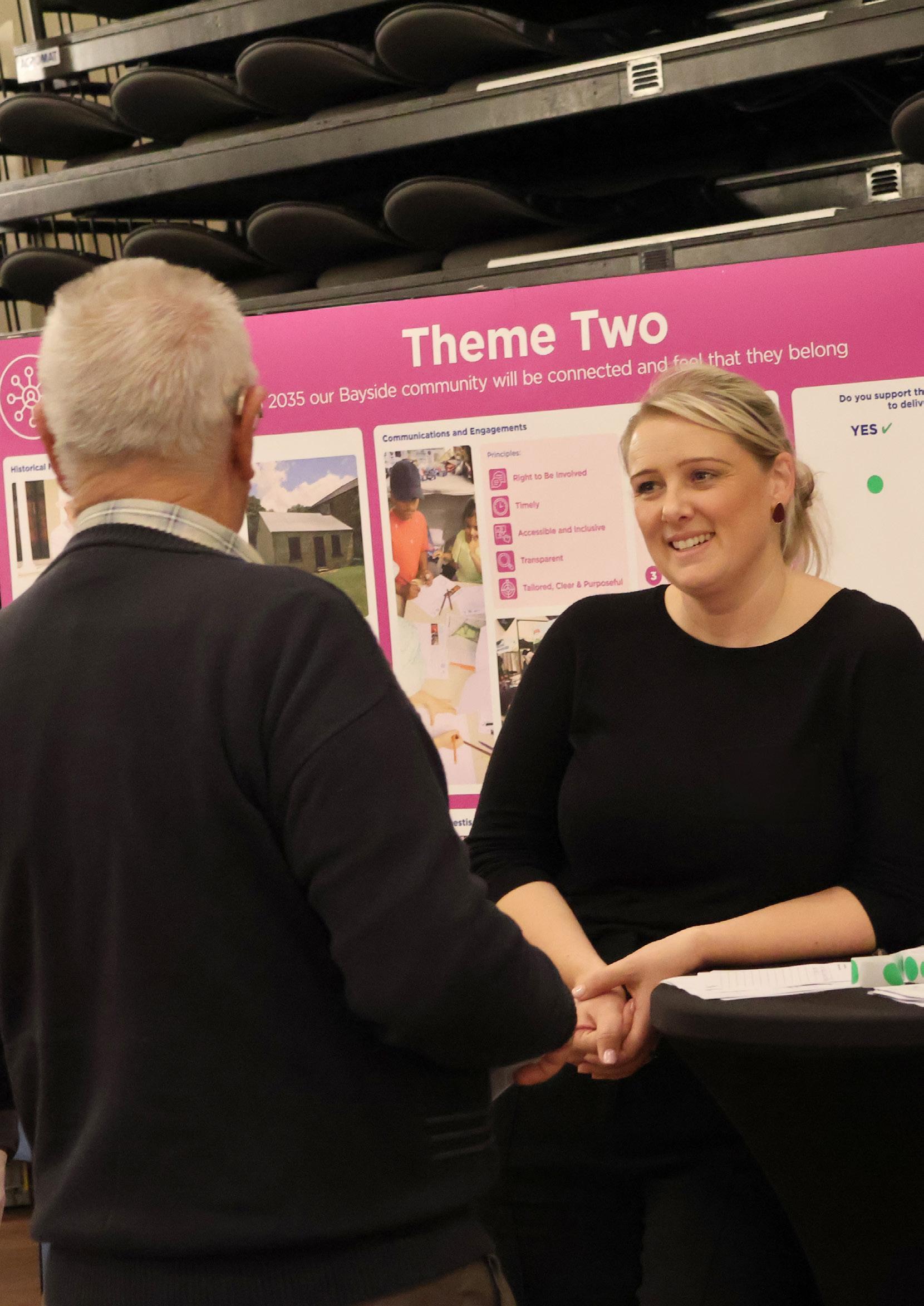
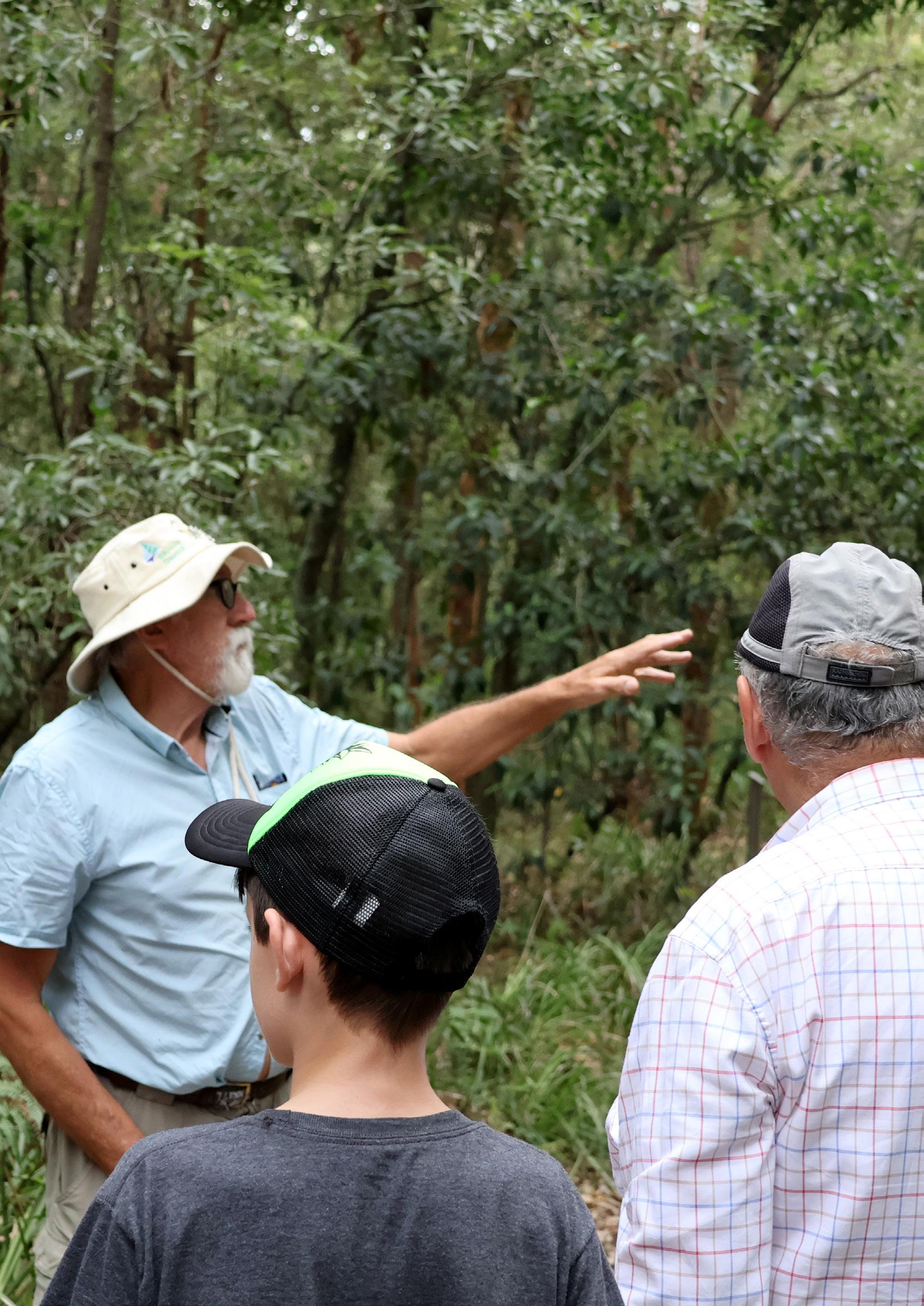
Bayside Customer Service Centres Rockdale Library, 444-446 Princes Highway, Rockdale Westfield Eastgardens, 152 Bunnerong Road, Eastgardens Monday to Friday 8:30am – 4:30pm
Phone 1300 581 299 | 9562 1666 Email council@bayside.nsw.gov.au Web www.bayside.nsw.gov.au